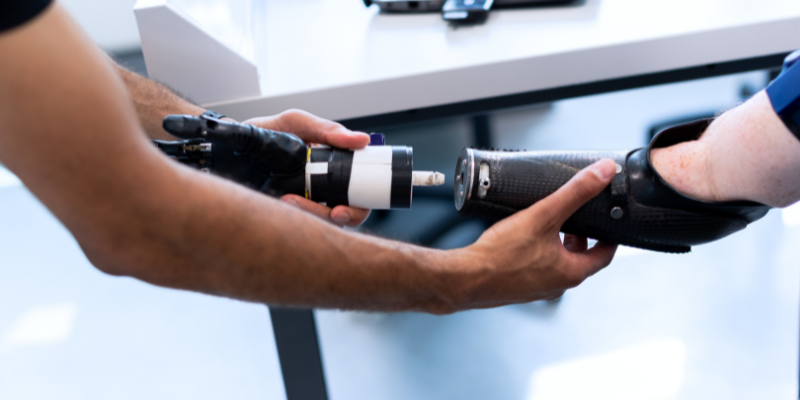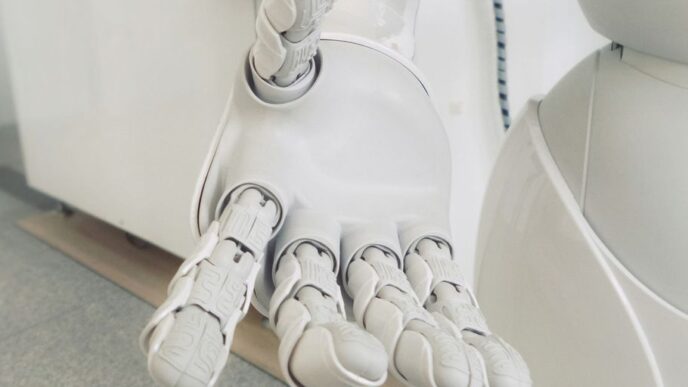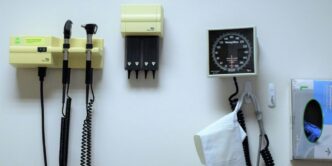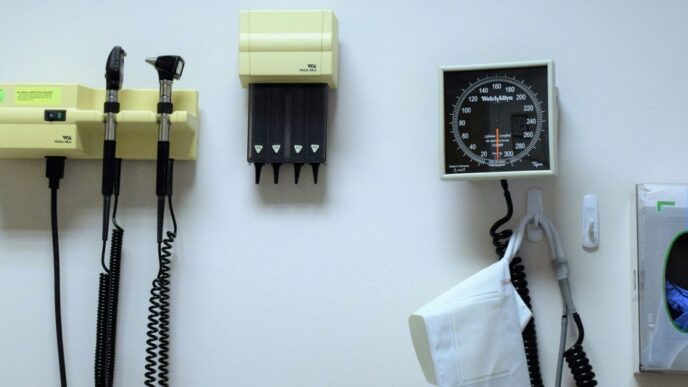From the earliest days of medicine, technology has played a vital role in delivering better healthcare outcomes. Today, with advances in medical technology accelerating at an unprecedented pace, we are on the cusp of a new era where patients can receive truly personalized and precise care. From telemedicine to AI-powered diagnostics and robotic surgery, the possibilities for using technology to improve patient care seem endless. In this blog post, we’ll explore why medical technology is critical for improving patient care and how it can help healthcare providers deliver better outcomes for their patients.
Introduction to Medical Technology
Medical technology is critical for improving patient care because it allows medical professionals to diagnose and treat patients more effectively. The use of medical technology can help to improve the accuracy of diagnoses, the effectiveness of treatments, and the overall quality of patient care. In addition, medical technology can help to reduce the cost of healthcare by making it possible to provide more efficient and effective care.
Some examples of medical technology that is critical for improving patient care include diagnostic tools such as X-ray machines and MRIs, which can help doctors to make more accurate diagnoses; treatment tools such as surgery equipment and drugs, which can help doctors to provide more effective treatments; and communication tools such as electronic health records, which can help doctors and nurses to coordinate care more effectively.
How Medical Technology Improves Patient Care
Medical technology has revolutionized the healthcare industry and the way patient care is delivered. By providing access to information and tools that were previously only available to doctors and other medical professionals, medical technology has empowered patients to take a more active role in their own care.
Medical technology can be used to track and manage health conditions, schedule appointments and medications, and even provide remote access to specialists. For patients with chronic conditions or who need complex care, medical technology can be a lifeline that helps them stay connected to their care team and manage their condition on their own.
In addition to improving patient care, medical technology also has the potential to improve the efficiency of healthcare delivery. By automating tasks and processes, medical technology can help free up time for caregivers so they can focus on more important tasks. In addition, by providing real-time data and analytics, medical technology can help identify inefficiencies in care delivery so they can be addressed.
Examples of Medical Technology Used in the Healthcare Industry
Medical technology plays a vital role in the healthcare industry by providing clinicians with the tools they need to diagnose and treat patients effectively. There are a wide range of medical technologies available, from basic diagnostic tools such as X-ray machines and blood pressure monitors, to more complex technologies such as MRI scanners and pacemakers.
While all medical technologies are important, some have a particularly significant impact on patient care. For example, MRI scanners allow doctors to obtain detailed images of the inside of the body without resorting to invasive procedures. This can be invaluable for diagnosing conditions such as cancer or brain injuries.
Similarly, pacemakers help keep the heart beating regularly, which can prolong and improve the quality of life for patients with heart conditions. Other medical technologies, such as artificial limbs and cochlear implants, can also make a huge difference to patients’ lives by restoring their ability to live independently and participate in everyday activities.
Medical technology is critical for improving patient care because it provides clinicians with the tools they need to diagnose and treat conditions more effectively. By investing in new and innovative medical technologies, we can continue to improve the quality of healthcare for everyone.
Benefits of Medical Technology for Healthcare Providers
Medical technology has revolutionized the healthcare industry and the way providers deliver care to patients. In the past, provider-patient interaction was limited to in-person visits, but with the advent of new technologies, providers can now offer care via telemedicine, email, and even text messaging. This allows providers to reach a wider audience and provide care to more patients in a shorter period of time.
One of the most important benefits of medical technology is that it helps providers keep track of their patients’ health. In the past, paper records were used to track patient health information, but these are often lost or misplaced. With electronic health records (EHRs), providers can easily access their patients’ medical history, medications, allergies, and immunizations. EHRs also help providers identify trends in their patients’ health so they can take steps to prevent or treat conditions early on.
Another benefit of medical technology is that it makes it easier for providers to communicate with one another. In the past, faxes were often used to send messages between provider offices, but this could lead to delays in care if the fax machine was down or out of paper. Nowadays, there are secure messaging systems that allow providers to instantly send messages and share files with one another. This helps ensure that all members of the healthcare team are on the same page and reduces delays in care.
Medical technology can help improve patient safety. For example, computerized physician order entry (CPOE) systems are used in many hospitals and clinics. This technology helps reduce medical errors by ensuring that the correct medications and doses are prescribed to each patient. It also ensures that all orders are accurately recorded in the patient’s medical record, which can help providers avoid medication errors.
Finally, medical technology can help improve the overall efficiency of healthcare organizations. For example, automated appointment scheduling systems can help reduce wait times for patients and ensure that doctors have enough time to see all of their patients. Electronic health records also make it easier for providers to access patient information quickly, helping them provide better care in a shorter amount of time. In addition, some technologies allow providers to instantly access laboratory results or radiology images so they can diagnose and treat their patients more quickly.
Challenges Posed by Medical Technology
The ever-changing landscape of medical technology can be both a blessing and a curse for healthcare organizations. On one hand, new technologies have the potential to vastly improve patient care and outcomes. But on the other hand, these same technologies can also pose significant challenges for healthcare organizations, both in terms of cost and implementation.
One of the biggest challenges posed by medical technology is the high cost of new treatments and technologies. For example, the average cost of a new cancer drug is now over $100,000 per year. And many promising new treatments are still in clinical trials, which means they are not yet available to patients. This can put a tremendous financial strain on healthcare organizations, especially those that serve low-income populations.
Another challenge posed by medical technology is the need for constant upgrades and training. New technologies are constantly being developed, which means that healthcare professionals need to keep up with the latest advances. This can be difficult and time-consuming, particularly for busy clinicians who already have full schedules. Additionally, it can be hard to find time to train all staff members on new technologies when they are needed urgently in patient care settings.
Medical technology can also pose ethical challenges for healthcare organizations. For example, some new treatments raise questions about whether or not they should be used at all, due to their potential risks and side effects. Other treatments may be too expensive for some patients to afford, which raises questions about access to care and equity in the healthcare system.
How to Implement Medical Technology into Practices
Medical technology has revolutionized the healthcare industry and the way patient care is delivered. There are a number of ways to implement medical technology into practices, but the most important thing is to ensure that it is done in a way that will improve patient care.
Some of the most common ways to implement medical technology into practices include:
EHRs and health information systems: One of the best ways to use medical technology is to invest in an electronic health record (EHR) system. An EHR system can help doctors keep track of patients’ medical history, medication histories, and test results. This information can be extremely helpful when it comes to providing better patient care.
Telemedicine: Telemedicine is another great way to use medical technology to improve patient care. Telemedicine allows doctors to consult with patients via video conferencing, which can be extremely helpful for patients who live in rural areas or who have difficulty traveling to see their doctor.
Disease management software: Disease management software is another type of medical technology that can be used to improve patient care. This type of software helps doctors keep track of their patients’ progress and make sure they are staying on track with their treatment plans.
Clinical decision support systems: Clinical decision support systems (CDSSs) are a type of software that helps doctors make better decisions about patient care. CDSSs take into account a variety of factors, such as a patient’s medical history, test results, and current medications, to help doctors make more informed decisions.
Wearable devices: Wearable devices are becoming increasingly popular in the medical field. These devices can be used to track a variety of health metrics, such as heart rate and blood pressure, which can provide doctors with valuable information about their patients’ well-being.
By investing in the right type of medical technology and implementing it correctly into your practice, you can significantly improve the quality of care you provide to your patients.
Conclusion
In conclusion, medical technology is a vital tool for improving patient care. With the help of innovative technologies, healthcare providers are able to diagnose and treat patients more effectively and efficiently. Additionally, modern medical technology helps healthcare professionals provide better education to patients about their conditions and treatments. Ultimately, it is clear that medical technology has an important role in improving the quality of patient care and helping save lives.













